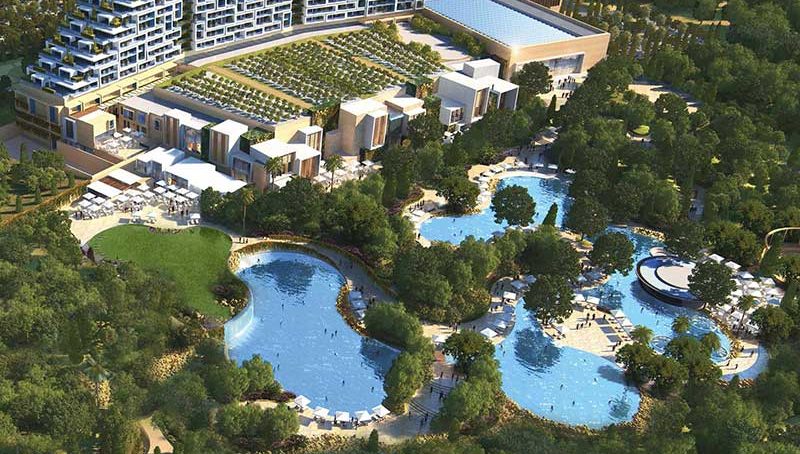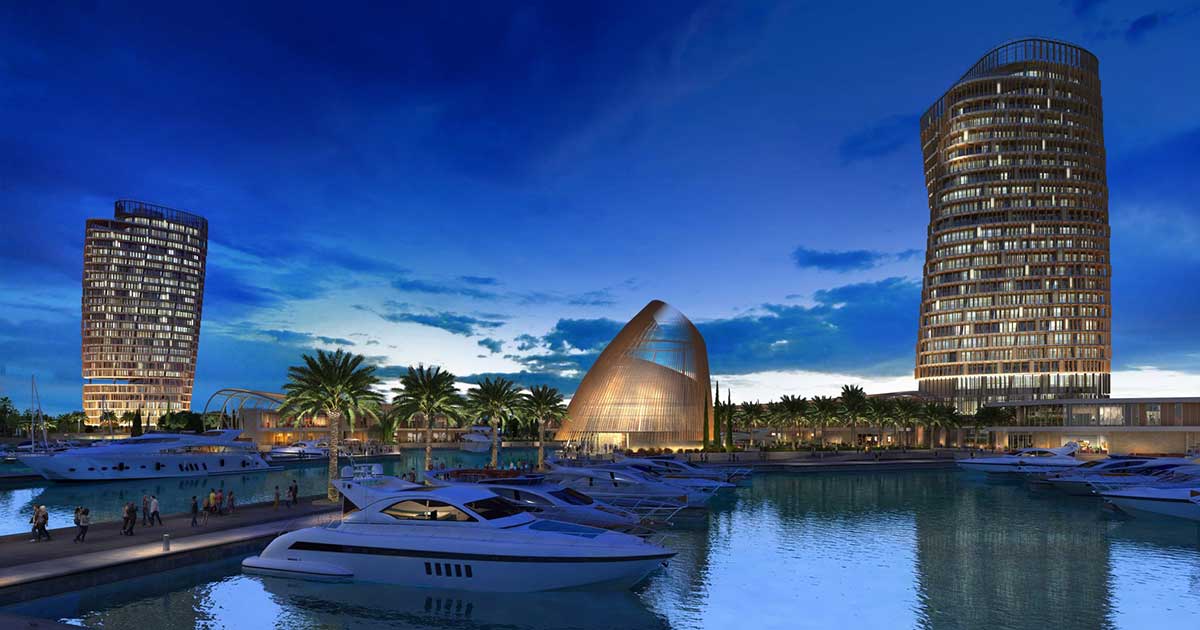Despite the decrease in the number of tourists, largely due to uncertainty surrounding Brexit, the fall of the Russian ruble and challenges related to the German market, the Cypriot government is determined to remain focused on strengthening the sector. Ralph Nader, CEO of Amber Consulting, considers the next steps
With the launch of the new 10-year tourism plan, deputy tourism minister Savvas Perdios asserts that his ministry is working hard to open up to as yet untapped markets and attract new visitors. “Nothing can be taken for granted in the coming years,” he said, outlining the ministry’s aims which include doubling the number of arrivals, increasing tourist revenues three-fold, creating 47,000 job opportunities and attracting € 20 billion in new investment to Cyprus by 2030.
Rebranding the island
The island will have a new tourism ‘face’ in 2020, led by a new logo which replaces the old ‘Love Cyprus’ one. The government has already opened a €2 million bid for Cyprus to acquire a new brand name for tourism, with a view to highlighting the island’s unique characteristics and selling points at the 2020 Berlin Tourism Exhibition. In addition, the government is channeling its efforts into extending the tourist season and showcasing the island as an all-year-round European destination.
Customized tourism campaigns
As well as identifying its top markets, the Cypriot government has been smart enough to recognize that communicating with the target market as per their needs is key. In line with this strategy, the Ministry of Tourism has adapted the image to be conveyed depending on which market it is targeting.
Cyprus is an island offering lifetime experiences
When targeting markets such as the Czech Republic, Poland and Ukraine, this is the image that will be relayed. The same selling point will be used as the country looks to tap new markets, such as Germany, France, the Netherlands, Switzerland, Austria and Belgium.
Cyprus is the place for retirement
Concurrently, markets such as the UK, Ireland, Sweden, Denmark, Norway and Finland will be targeted for tourists who are over 65 and financially comfortable enough to enjoy retirement by staying abroad for several weeks annually.
Cyprus is for short stays
For markets that are a 90-minute flight away or less, such as Israel, Egypt, Lebanon, Greece, the UAE and Jordan, Cyprus will be promoting itself as an easy-to-reach vacation.
China moving next door
Seeking to expand its footprint inside Europe and hunting down the golden visa, China has found its ideal destination in Cyprus. “There’s an ocean of investments from China,” Panicos Kaouris, president, Cyprus China Business Association said. “We would drown with just a drop of that.” Chinese money is entering a broad range of economic sectors, from real estate and shipping to financial services, tourism and renewable energy.
The owner of Hong Kong-based Melco Resorts & Entertainment Ltd, Lawrence Ho, is the man behind the island’s famed USD 617 million integrated luxury casino resort, the City of Dreams Mediterranean. This megaproject will feature a hotel with 500 rooms and suites, multiple F&B outlets, a gaming area of 7,550 m2 with some 1,200 gaming machines and 140 tables, and over 9,600 m2 dedicated to convention and meeting spaces. The resort is expected to contribute € 700 million, or 4 percent of GDP, annually to the Cypriot economy.
Another USD 122.9 million, 5-star hotel and housing development near Ayia Napa represents an investment for China’s JimChang Global Group via a joint venture with Cyprus property group, Giovani. At Larnaca, state-owned China Communications Construction Group Ltd is one of two outfits bidding to take control of the port and adjacent marina. In addition, there are plans to launch direct flights to Beijing, following Aviation Industry Corp. of China’s capital injection into Cypriot Airlines.
In a separate development, Ryanair is planning to expand its 2019/2020 winter schedule to cover 25 routes in total, including seven new routes from Paphos and offering 24 to Paphos and one to Larnaca. With a targeted and well-established tourism plan, foreign investment for its mega projects and political stability, Cyprus has great potential to reach the goals set for its tourism industry.
Branded high-end accommodation
In a sign of the island’s tourism potential, two leading international hotel chains have decided to bring their luxurious 5-star hotel brands to the island, taking the accommodation offering to a higher Level.
Marriott International this year opened the 274-room Parklane, a Luxury Collection Resort & Spa, in Limassol.
In addition, Oxley Planetvision Properties has appointed AccorHotels and its luxury Sofitel brand to open and manage the first high-end, 245-room resort with branded residences in Limassol. The property is expected to open in 2022.
Building alliances?
With international appetite for traveling and world exploration constantly on the rise, picking just one destination to visit can be a challenge for globetrotters. Multi-country tours are not only the new trend, but also proving highly popular amongst travelers. A glance at the international scene reveals a large number of multi-country destinations available, with some of the most popular combinations for 2019 being: London, Paris and Rome; England, Scotland and Ireland; and Germany, Switzerland and Austria.
In 2005, an attempt was made to forge a strategic touristic alliance between Cyprus and Lebanon in a bid to promote joint tourism across both countries in one package. Unfortunately, five days later, on February 14, 2005, Lebanon’s Prime Minister Rafiq Hariri was assassinated, paralyzing the country and putting several major regional initiatives like this one on hold. Promoting multi-country destinations can be an efficient and profitable strategy to attract visitors that might not otherwise consider visiting a location. This is particularly true in the case of tourists from long-haul source markets who want to make the best of a trip by combining various countries nearby that complement each other and enrich the travel experience. In this way, capitalizing on the selling points of two destinations with great touristic assets and communicating with the targeted visitors (long-haul source markets) will boost the prospects for both countries.
In order to achieve a successful multi-country destination strategy, the markets involved need to develop and implement an advanced regional integration system:
1. Travel facilitation. Start by aligning the visa policies for third countries, evaluate whether it’s possible to establish a multi-country visa and finally simplify visa processing by enhancing services at border crossings.
2. Air, ground and water transportation connectivity. Since connectivity between countries is crucial for a successful multi-country destination strategy, having adequate linkages between both markets is a must. Four daily direct flights of 40 to 50 minutes between both countries will suffice as effective air connectivity; however, creating a water ferry option where appropriate will definitely increase connectivity and also add to the thrill of the overall experience.
3. Positioning and branding. With a primary goal of reaching major tourist-generating markets, the public and private sectors should look to develop cooperative marketing programs in order to build a solid brand appealing to long-haul source markets that embraces both destinations. Brazil makes for an ideal target long-haul market, given that about 7 million Brazilians of Lebanese descent live there, along with other South American destinations.























